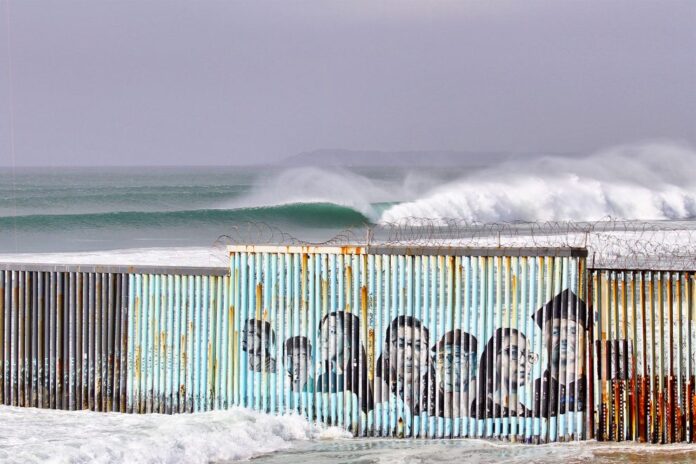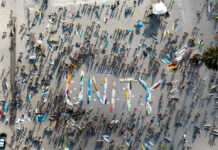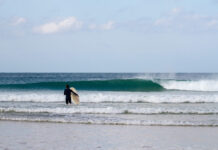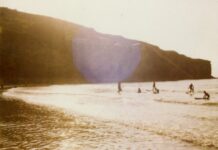“When we want to have a better understanding of the social and cultural processes around border regions, we usually focus on land borders. However, equally fluid and complex processes occur with oceanic borders, maritime boundaries that delimit, separate, and unify nation states. That is, the land and the sea are each sites in which border interactions and power dynamics play out between two countries.”
The above statement opens a paper published last year on the surfing trends on the Mexico-United States border, in which authors Jesús Estrada Milán and Luis Escala Rabadán put the tenuous and fickle interrelations of transnational practices under the microscope, opening up a new field of investigation into surfing.
Milán, a sociologist and independent researcher at Universidad Autónoma de Querétaro in Mexico, learned to surf in Tijuana whilst undertaking a Masters programme in Cultural Studies. He says the idea for the paper came after his very first surf lesson, when he “realised that some things I thought were a huge problem, are not. There’s something about the perspective of surfing – it makes you a very reflective person.” This eureka moment compelled him to switch the topic of his thesis to surfing, and dive into research.
From then on Milán started to familiarise himself with the surf scene in and around Tijuana. Straightaway, he learned that Baja California was one of the first Mexican states to adopt surfing – but also that it remains a relatively unexplored practice when compared to other cultural sports such as football or baseball. “I tried to find the meanings and values of the sport,” says Milán. “And one of the things in Baja specifically is all the border-related issues around surfing.” Taking several surf trips around northern Baja, Milán conducted both formal and informal interviews in and out of the water. He asked locals how they thought the border is connected to surfing, and their opinions on surf tourism from the US to Mexico in the border region. These interviews, together with direct observations and auto-ethnographic notes (a self-reflective technique in anthropology) informed the ethnographic data upon which the paper was structured.





